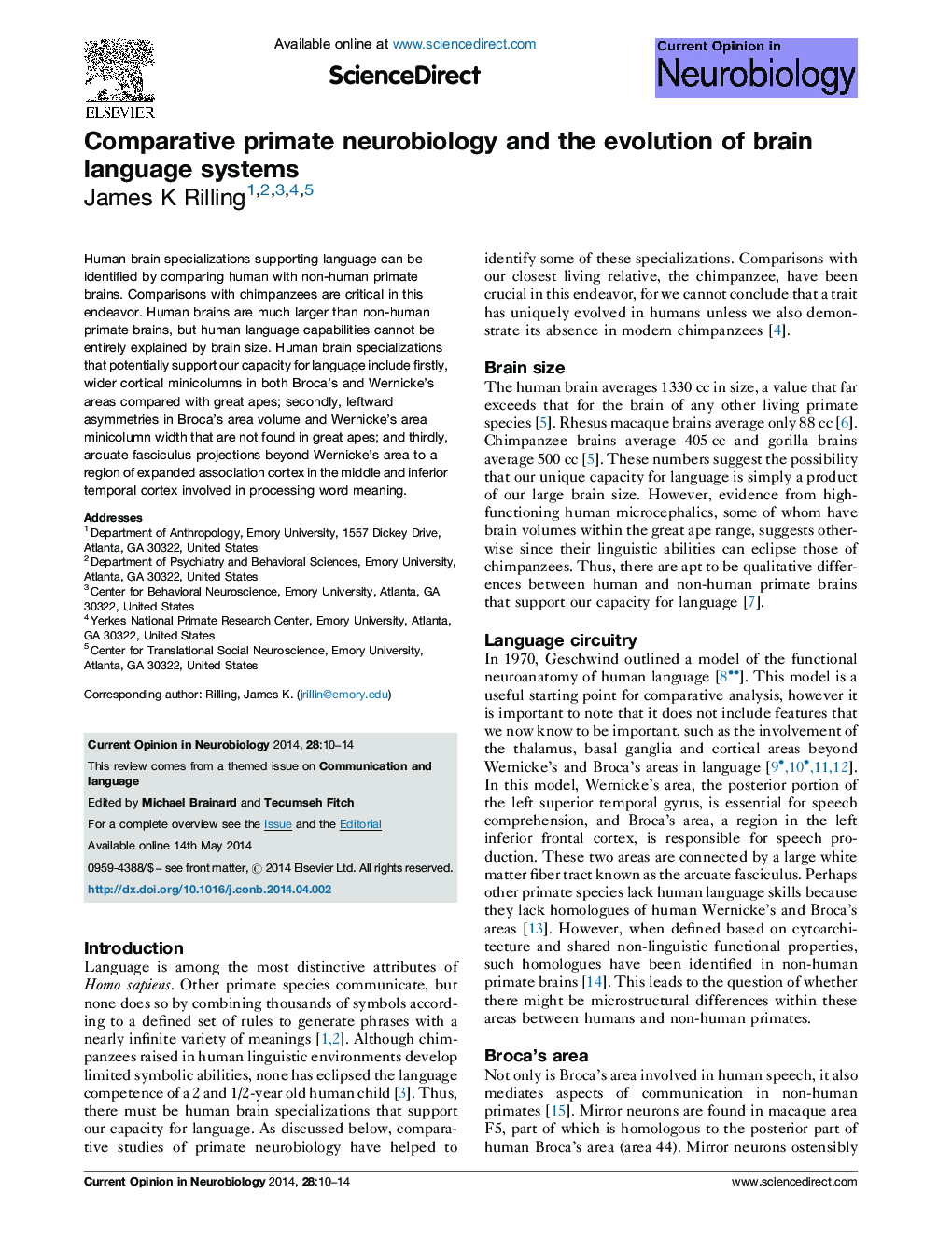| Article ID | Journal | Published Year | Pages | File Type |
|---|---|---|---|---|
| 6266648 | Current Opinion in Neurobiology | 2014 | 5 Pages |
â¢Comparisons between human and non-human primate brains can identify human brain specializations that support language.â¢Non-human primate brains have homologues of Broca's and Wernicke's areas, as well as connections between them.â¢Wernicke's and Broca's areas have wider minicolumns in human brains than do their homologues in non-human primate brains.â¢Humans have certain leftward asymmetries in Broca's area and Wernicke's area that are not found in ape brains.â¢The arcuate fasciculus pathway is involved in language and has markedly expanded in human evolution.
Human brain specializations supporting language can be identified by comparing human with non-human primate brains. Comparisons with chimpanzees are critical in this endeavor. Human brains are much larger than non-human primate brains, but human language capabilities cannot be entirely explained by brain size. Human brain specializations that potentially support our capacity for language include firstly, wider cortical minicolumns in both Broca's and Wernicke's areas compared with great apes; secondly, leftward asymmetries in Broca's area volume and Wernicke's area minicolumn width that are not found in great apes; and thirdly, arcuate fasciculus projections beyond Wernicke's area to a region of expanded association cortex in the middle and inferior temporal cortex involved in processing word meaning.
